
Almost everyone loves foxes, whether they’ve seen one in person or not.
These small canine carnivores are almost universally regarded as cute, with big eyes and ears, long and fluffy coats, and vivid colors – ranging from the russet reds of the red fox to silvery gray and black.
And, most people like foxes for their intelligence and curiosity – even if farmers dislike them for the same reason.
True foxes include any animal in the Vulpes genus. However, there are many “false” foxes that are more closely related to other canines.
In addition, there are plenty of other mammals that resemble foxes. Most of those are canines and share a great deal with foxes.
If you’re also looking at this list because you want to keep a fox as a pet and it’s illegal in your area, there are several animals on this list that you can keep as pets.
Topics
1. Bat-eared Fox

Scientific Name: Otocyon megalotis
Why They Made The List: Bat-eared foxes are so close to foxes that they share a name, despite it not being scientifically accurate.
Bat-eared foxes are a species of canine commonly called foxes. However, they’re not true foxes. In fact, the body build is more like that of a dog than a fox.
However, bat-eared foxes share the large ears, pointed muzzle, and fluffy tail of the true fox.
If you take a closer look at the bat-eared fox, it has a raccoon-like face. Its coloration also looks more like a raccoon, with dark legs and a silver body. However, it lacks the characteristic ringed tail.
And, of course, the bat-eared fox gets its name from its large and rounded ears, which make up about a third of its height. That’s impressive, considering bat-eared foxes are about 3 feet high at the shoulder and their ears are usually close to a foot high!
Interestingly, bat-eared foxes are the closest living relatives to the raccoon dog and the true fox.
2. Raccoon Dog
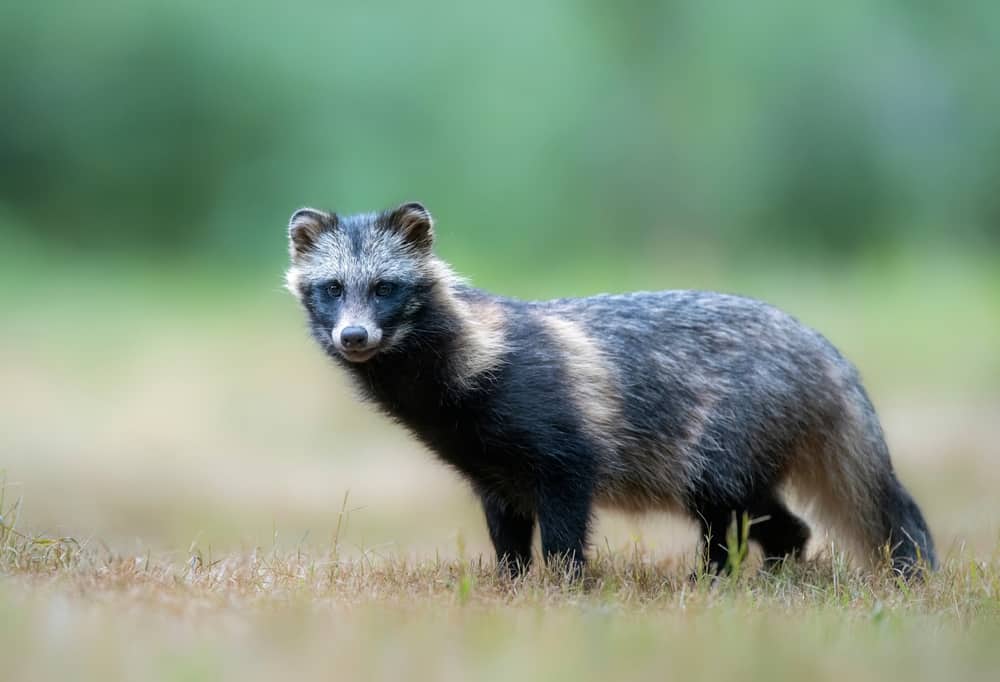
Scientific Name (genus): Nyctereutes
Why They Made The List: Raccoon dogs are extremely closely related to true foxes, but look more like long-legged raccoons.
Raccoons share almost everything with foxes, including a long fluffy coat, diet, and a long tail. However, they do have some distinct differences.
For example, they normally have longer and coarser fur. While they look as soft as foxes, the outer coat of raccoon dogs is much more bristly.
In addition, their tail is usually only about half the length of the body – unlike foxes whose tail is usually about the same length as the body.
Otherwise, raccoon dogs are extremely similar to foxes. For example, they have a long and pointed snout, thin legs compared to the body, and live on a very omnivorous diet.
In fact, raccoon dogs don’t hunt, they forage, with berries, roots, found carrion, and nuts included in their normal diet.
However, raccoon dogs get their name from the fact that they look exactly like raccoons with long legs. That holds true from the raccoon-like patterning on the face to the ringed tail.
3. Raccoons

Scientific Name: Otocyon megalotis
Why They Made The List: Raccoons share the long fluffy fur and tails of raccoons and are similarly omnivorous.
Raccoons don’t have much in common with foxes. However, they do share a lot of superficial similarities.
For example, both of them are small omnivorous mammals that eat just about anything they can find – including small mammals, nuts, seeds, and berries.
Both also burrow or den in found hollows and logs. And, they have similar-looking fur, with long and soft hairs and vibrant colors.
Raccoons also have long pointy noses, slim legs, and a tail that’s about as long as the body. Otherwise, the similarities end.
No one would compare a trundling raccoon to a graceful fox. And, with their hands and clever ability to open doors and latches, raccoons are a lot more versatile than foxes.
Still, in the dark, you might mistake one for the other.
4. Red Panda

Scientific Name: Ailurus fulgens
Why They Made The List: Red pandas share the coloration and long fluffy fur of a fox, but are more similar to a raccoon.
Red pandas are famous for being the tinier cousins of the panda, but they aren’t even bears.
In fact, red pandas are similar to raccoons and skunks. They also look the most similar to raccoons, with a similar build and body type.
However, red pandas are actually more like foxes than raccoons are. For example, the tail-to-body ratio is more similar.
They also share the russet color of the famous red fox and have longer and more pointed ears than the raccoon. So, if you were to see a red panda and not know what you were looking at, you might not know if it’s a raccoon or a fox.
The truth is, they’re neither. However, they do share the muzzle and tail markings of a raccoon.
On the other hand, they’re larger, usually 8-35 pounds, and about 4 feet long including the tail. That puts them more in the size range of an average fox.
https://www.youtube.com/watch?v=13Kaw0mbCM0
5. Bush Dog

Scientific Name: Speothos venaticus
Why They Made The List: Bush dogs are closely related to foxes and other canines, although they share few physical traits other than basic “dog-like” builds.
Bush dogs are native to South America and Costa Rica, where they’re one of several native dogs.
These animals are significantly different in appearance from foxes, with stocky bodies, short legs, and broad heads. In fact, some people think they look more like bears than like dogs.
However, bush dogs are true canines and even hunt in packs. They’re also one of the most aggressive of the native canines and have been known to take down tapirs – which are 10 times the bush dog’s weight.
Bush dogs have short, dense fur in brown. However, most are born black. In addition, their broad head and rounded ears are similar to that of a bear.
That’s added to by the fact that most are uniformly brown in color, with some stockings or darker markings on the legs or nose. In addition, some bush dogs are russet red, similar to the red fox.
6. Gray Foxes
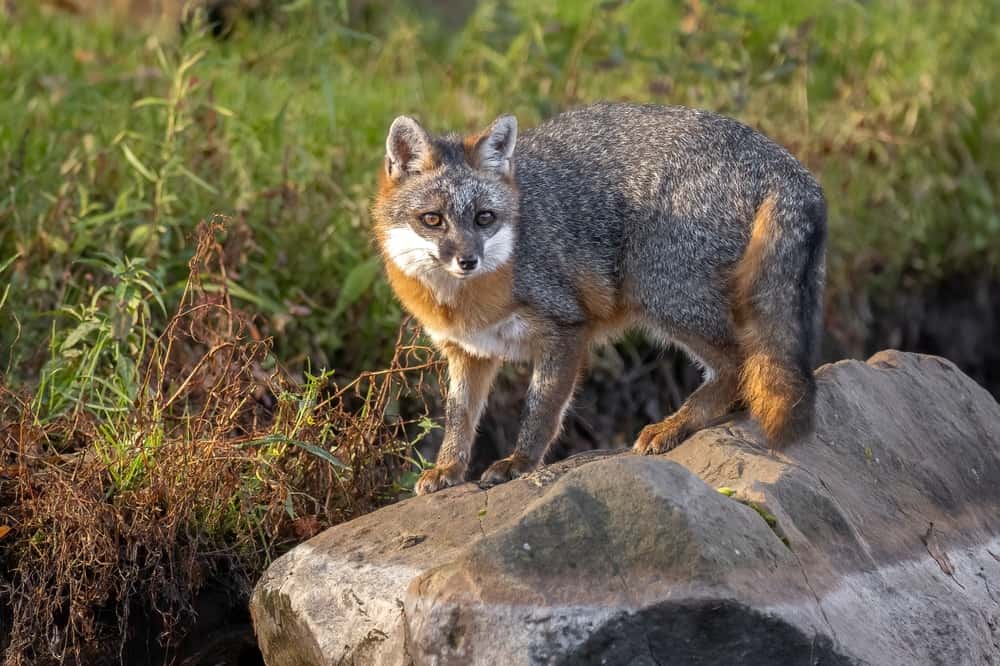
Scientific Name (genus): Urocyon
Why They Made The List: Grey foxes are not true foxes, however, they look very similar and share the name.
Gray foxes include two species of “fox” which are native to California and the southern part of the Northern Hemisphere in the Americas. These dogs look very similar to true foxes.
However, they’re usually taller, have longer legs, and their tails are longer in proportion to their body. In addition, most have shorter fur, although that can be difficult to tell from a distance.
Here, the common gray fox is the most populous of these foxes.
Its range extends from the southern half of Canada all the way down to South America. The “Island Fox” is endemic to several islands off the coast of California.
However, it is this smaller species that looks the most like a true fox. In fact, the Island Fox can look very similar to a red fox, although it’s usually taller and longer.
Otherwise, there are no real differences. And, if you were to see a red fox and an island gray fox, you’d probably have trouble telling the difference.
7. African Wild Dog
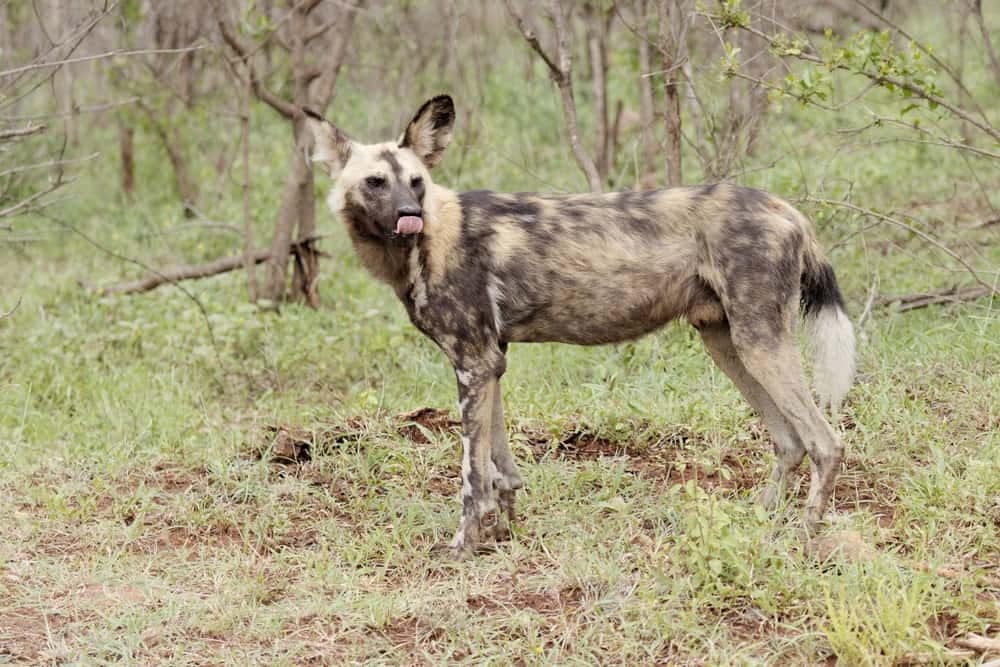
Scientific Name: Lycaon pictus
Why They Made The List: The African wild dog looks like a cross between a dog and a fox, with large fuzzy ears and a long tail.
The African wild dog or painted dog is a multi-colored dog native to sub-Saharan Africa.
The animal is currently endangered, meaning it’s unlikely you’ll ever see one outside of a zoo – but bears many similarities to both the fox and the dog.
In fact, African wild dogs are black and russet, with tails about half the length of the body.
They’re also taller than most foxes and hunt in packs. However, with long ears that exceed the height of the head, some might think they’re large foxes.
In addition, painted dogs have short fur, which is much better suited to their warm environment. Unlike foxes, painted dogs are rarely omnivorous and get 70% or more of their food from antelope.
8. South American Foxes

Scientific Name: Lycalopex
Why They Made The List: False foxes aren’t foxes but they most definitely look it, even to the trained eye.
South American Foxes or “False foxes” are a genus of canines that look very similar to foxes. However, they’re more closely related to wolves and jackals.
On the other hand, you couldn’t tell that by looking at them, as false foxes can be difficult to tell apart from true foxes.
At the same time, that depends on the species. Some like the South American Gray Fox (Chilla) and Darwin’s Fox are extremely similar to true foxes.
Others, like the Pampas Fox, look more like small coyotes. And, the hoary fox shares the russet coloration of the red fox, although it’s significantly less vivid.
Otherwise, true foxes share a lot in terms of diet, socialization, and habits with false foxes.
9. Dhole
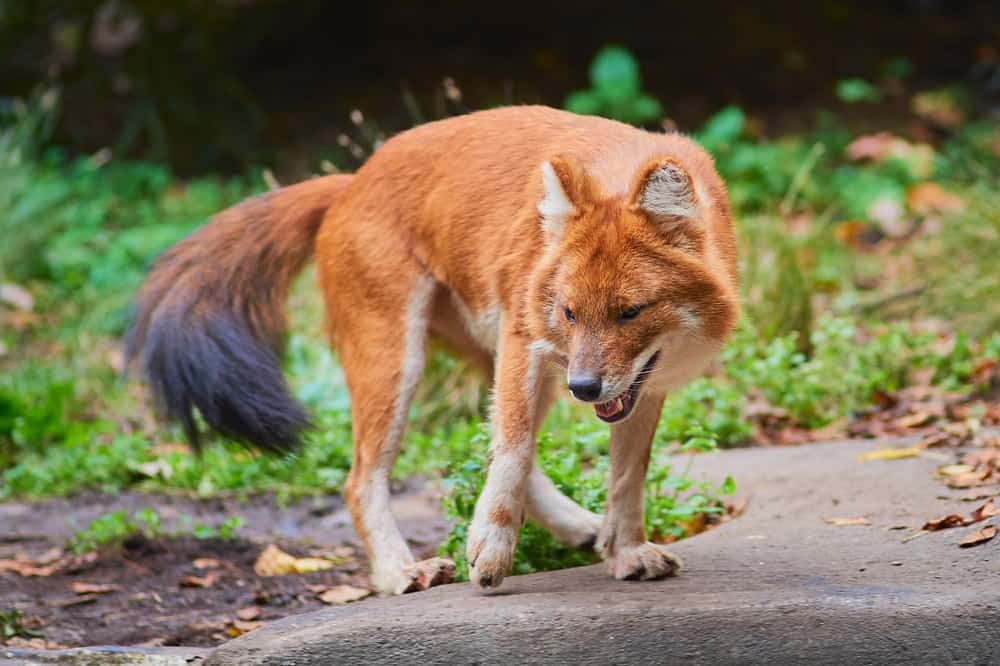
Scientific Name: Cuon alpinus
Why They Made The List: Dholes are one of the most visually similar animals to the red fox although they have shorter fur.
The Dhole might be the most visually similar animal to the red fox other than the Island Fox. These foxes are native to Central, South, East, and Southeast Asia.
In addition, with russet coats, they share the same coloration as the red fox, although they’re normally a bit less vivid.
Dholes also have the large ears and long tails you’d expect from a fox. However, they’re a bit stockier in the body and neck and the fur is shorter.
Otherwise, there’s little to tell you this animal isn’t simply a large fox. Some dholes even have the white neck and chest common in red wolves.
On the other hand, they can weigh up to 45 pounds, making them significantly larger than most foxes.
Finally, unlike foxes, dholes are extremely social. They’re one of the only canines that aren’t at all territorial, and they’ll form large clans that break up into smaller packs for hunting.
10. Maned Wolf

Scientific Name: Chysocon brachyurus
Why They Made The List: Maned wolves can be described as large dogs with the markings of a fox, plus the ruff of a hyena.
Maned wolves are native to South America, where they’re one of the largest native canines. In fact, at up to 3 and a half feet at the shoulders, they’re one of the larger canines in the Americas.
In addition, they look strikingly similar to very large foxes, with russet coats, dark manes, and dark paws.
Maned wolves also share similar facial shapes and markings with the red fox. In addition, they have large, pointed ears that are often taller than the head.
However, with a shorter but still soft and luxuriant coat, maned wolves aren’t as fluffy as most foxes. The tail is also about the same length as a fox, but considering the maned wolf is significantly longer, looks a lot shorter.
Like foxes, maned wolves are solitary animals. They’re very unlikely to be seen with other maned wolves outside of mating season. In addition, they get more than 50% of their diet from plants, including the wolf apple.
11. Crab-eating Fox
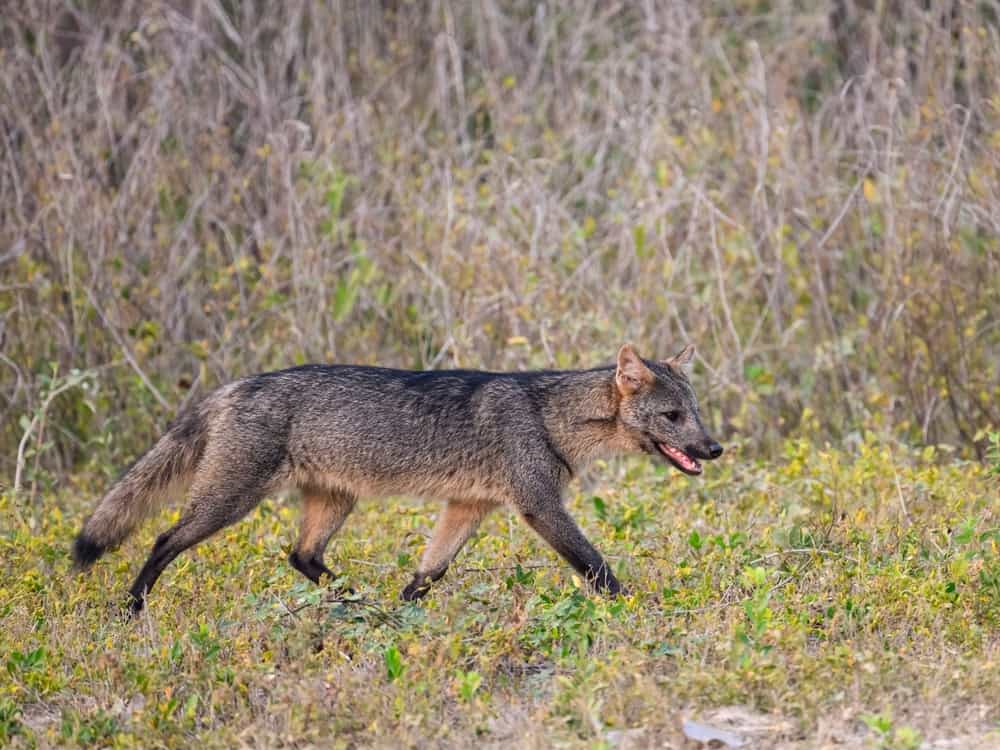
Scientific Name: Cerdocyon thous
Why They Made The List: Crab-eating foxes or bush dogs look extremely similar to short and stocky foxes.
The crab-eating fox or South American Bush Dog is a medium-sized canid endemic to central South America. These foxes share appearance and coloration with the silver fox.
In fact, without close inspection, you might not be able to tell one from the other.
However, the crab-eating fox is stockier with a larger body and chest. In addition, its legs are longer.
The tail is also significantly shorter in comparison with the body and does not touch the ground – unlike all true foxes. The ears, while still larger, are also about 30% smaller in proportion to the head than a true fox.
So, there are plenty of differences. But, without knowing what you’re looking at, it’s unlikely you’d notice the difference.
12. Coyotes

Scientific Name: Canis latrans
Why They Made The List: Small coyotes are so similar to foxes that gray foxes are sometimes confused for tiny coyotes.
Coyotes are a species of canine native to North America, with a range from Central America all the way up to the tip of Canada.
These wild dogs are hardy, adaptable, and diverse, and can be found living in every single environment or biome in North America.
Plus, with a population estimated to range between 750 million and 1 billion depending on who you ask, they have one of the largest populations of any canine other than the domesticated dog.
Coyotes can also look significantly like foxes. At their largest, coyotes resemble small gray wolves and can weigh over 75 pounds.
But these animals can be as much as half that size, and in mountains and arctic regions, have adapted a long and fluffy coat.
That aside, there are many differences, including smaller ears, shorter fur, and shorter tails.
The body and legs are also more proportional, meaning the coyote looks less graceful. And, coyotes live and hunt in packs – so you’ll almost never see just one.
13. Jackals
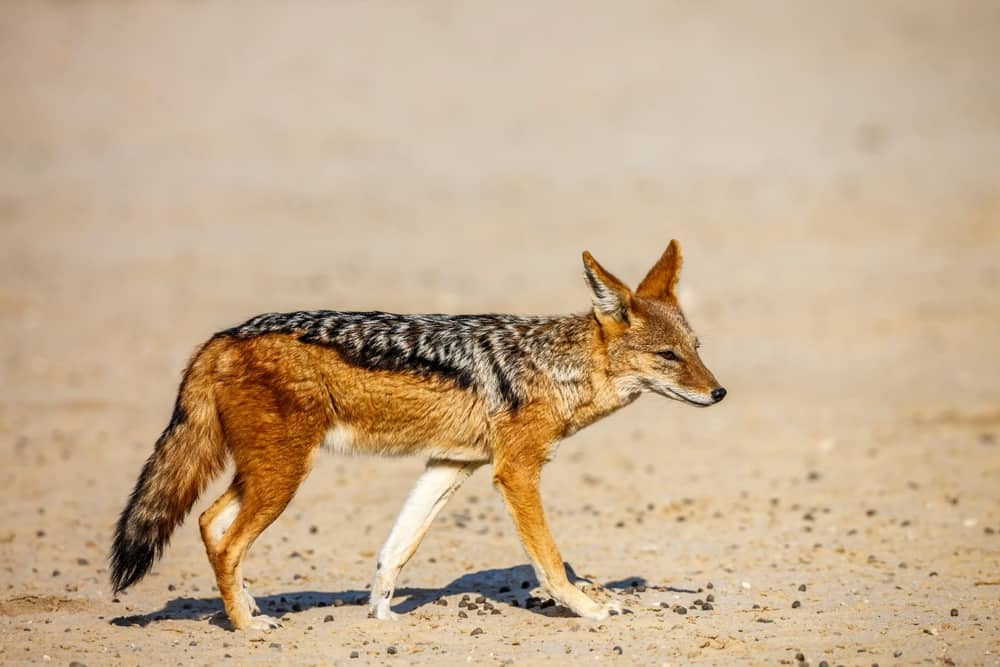
Scientific Name: Canina
Why They Made The List: These canines often resemble a mix of wolves and foxes – with large ears and fluffy tails.
Jackals include three species of canines native to Africa and Eurasia. All three bear a passing resemblance to foxes, with long and delicate legs, fluffy tails, and slim and pointed snouts.
All of them also have slightly larger ears than the wolf, although they are comparatively smaller than the fox.
In addition, there are two genera of jackals. The Lupulella look less like foxes in terms of coat but more in terms of build.
These canines have shaggy fur on their back but very short hair on their legs and underbelly. That allows them to cool off quickly in the savannah sun but gives them some protection from the underbrush and the sun from the top.
The golden jackal, which is actually more closely related to wolves, looks like a large and short-haired fox.
However, you might also think it looks like a coyote with russet coloring on the nose, although golden jackals are slimmer and thinner than most coyotes.
14. Wolves
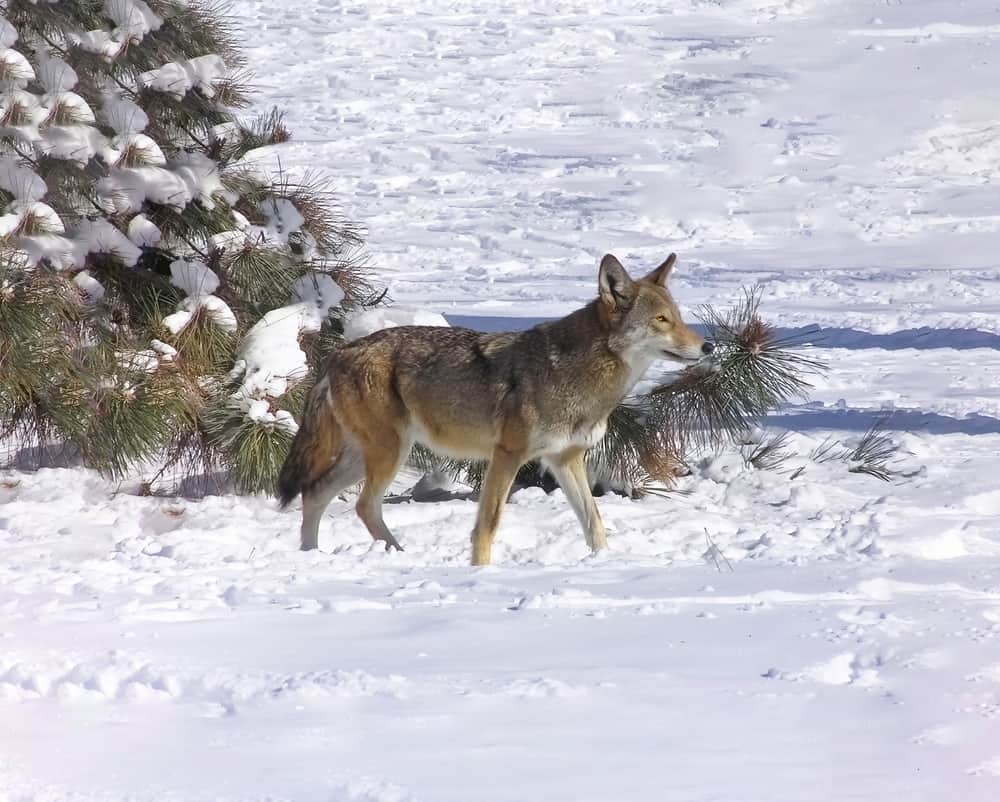
Scientific Name: Canis lupus
Why They Made The List: Wolves are closely related to foxes and share similar coloration to some, although you’d never mistake one for another.
Wolves are large canines and are often the heaviest found in the wild. The gray wolf can reach over 140 pounds, making it larger than most domestic dog breeds.
However, with a shaggy coat, white and black markings, and a delicate nose, wolves look similar to foxes – although much larger.
However, wolves are much less omnivorous than most foxes. In addition, they hunt in packs. They also rarely dig their own dens, and are more likely to rely on caves, fallen logs, and other natural protection for creating a den.
Like coyotes, wolves are also extremely adaptable and can be found in any environment that has enough food to keep a pack alive.
15. Short-Eared Dog
Scientific Name: Atelocynus microtis
Why They Made The List: The short-eared dog might look like a weird cross between a cat and a dog, but it’s closely related to the fox and even called a “blue-eyed fox” in Spanish.
The short-eared dog is a small canine that’s only found in the Amazon Basin. That tiny range means almost no one knows they exist and they’re actually not well-known by science.
However, these dogs are closely related to other canids including foxes.
There are many differences between them, though. For example, the short-eared dog is semi-aquatic and spends much of its time swimming.
It has large, webbed feet that allow it to paddle better. And, much of its diet is made up of plants and fish found in the water.
In addition, its short fur and extremely stocky neck look nothing like a fox. However, the legs, thin pointed muzzle, and long bushy tail very much do.
16. Domestic Dog
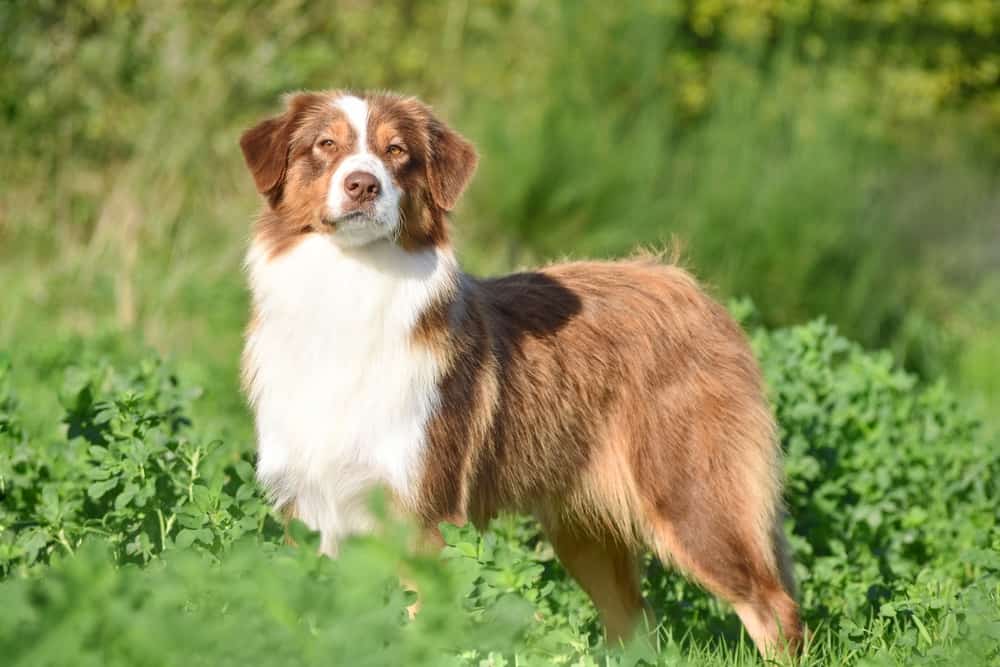
Scientific Name: Canis familiaris
Why They Made The List: Some dogs look so much like foxes that they make good substitutes for people who want foxes as pets.
You probably don’t think of foxes when you think of dogs. But, some breeds, like the Indian Spitz, the Iceland Sheepdog, Kugsha’s, and even Pomeranians can get remarkably close.
Most people think of foxes as small breeds with pointed muzzles, slender builds, and long hair – and there are plenty of dogs that get close.
However, all of them have different leg-to-body ratios and shorter tails. It’s also impossible to find a dog with fur as soft as that of a fox, because dogs have coarser hair.
In addition, dogs are pack animals rather than solitary. They also don’t normally burrow, although, like foxes, they love to dig.
Conclusion
Almost any canid bears a significant resemblance to a fox in one way or another. However, if you want the long bushy tail, soft fur, and graceful appearance of a fox, the false foxes, dhole, and maned wolf are your best bet. On the other hand, you can’t keep any of those as pets either. On the other hand, you can keep a spitz dog, and if you choose a Finnish Spitz, you can even get close to the color.
